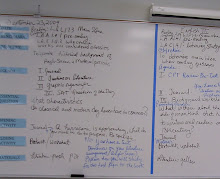Data analysis is nothing new, continuous school improvement is embedded in all aspects of school operations. Being in the “know” regarding student achievement data is critical to school success and has lasting implications on the overall character and reputation of a particular campus.
Everyday as administrators, we are faced with a multitude of data points and information being presented regarding programs, departments, grade levels and individual students. This data can be both qualitative and quantitative in nature and topics vary from school lunch wait times, customer survey satisfaction, to proficiency attainment of standardized assessments. The important aspect to glean regarding data analysis is the need for a systematic process for interpreting and utilizing data sources to make informed and sound judgments. In any process, it is vital that these efforts are both collaborative and reflective. According to the “Guide to Using Data in School Improvement Efforts”, combining these two elements, referred to as reflective collaboration, is a powerful process that occurs among staff and other members of the school community. The guide outlines the importance of designating time and structures for utilizing data. This includes embedding the process throughout all aspects of school operations; in faculty meetings, staff meetings, grade level/department meetings, professional learning community meetings, and parent/community group meetings.
The Florida Continuous Improvement Model begins with data disaggregation which seeks to answer questions such as: “What are the weakest areas?”; “What are the strongest areas?” and “What are patterns/trends?” From this utilization of data, there is the establishment of priorities and the development of an effective plan based on the standards.
One core belief regarding the utilization of data for school improvement is that student learning can and should improve on a continuous basis. It is essential that educators continually reflect on the quality of programs being implemented and interventions being employed. This process should be cyclical and continuous with concentration on the process, not any specific results.
Some basic guiding questions for collecting student achievement data can include:
- What evidence can we collect about our students’ learning?
- What evidence do we have that shows the knowledge, skills, and understandings our students have achieved?
- Which data indicates the degree to which our students show the conceptual understandings and generalizations in our standards?
- What evidence shows which students are meeting or exceeding our achievement expectations and which are not?
- What do we know about how each individual student learns?
Here are several different ways to disaggregate data:
- Gender
- Socio-economic status
- Mobility (students moving in an out of the districts at any given time)
- Race and ethnicity
- Special education and disability
- English as a Second Language (ESL)
- Enrollment patterns in courses like physics or algebra
- Successful completion of specific course such as advanced placement







